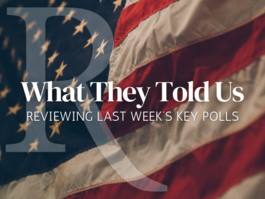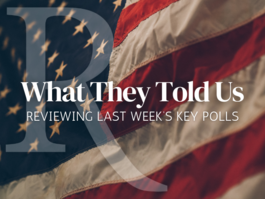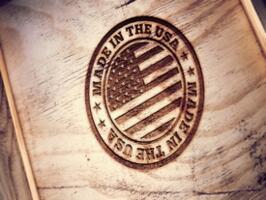Will Americans Pay for American-Made?
A Commentary By Froma Harrop
Wow, this T-shirt costs only $8. Great color. Problem is, your finger could punch a hole through it. In most Americans' shopping experience, colors change and styles come and go, but there's one constant: low quality and a sweatshop-country label.
Lot's been said lately about a flickering comeback in American apparel manufacturing. Wal-Mart vows to raise its meager buying of American-made products by $50 billion over the next 10 years. American clothing names -- New Balance and L.L. Bean, for instance -- now proudly advertise some of their wares as domestically produced.
Could an industry devastated by cheap imports come back? Americans are allegedly clamoring for more "made in USA" stuff. A poll shows almost half saying they'd pay an extra $5 to $20 for what's now a $50 sweater if the garment were made here.
But some skeptics doubt that consumers will act on these feelings. One is Marvin Greenberg, who spent many painful years in the garment business. As he sees it, consumers willing to pay more for better- and American-made clothes will remain a definite minority. The vast shopping public demands basement-scraping prices on two-for-one deals. Patriotism ends at the cash register. He's seen it happen.
"Back in the '60s, there was a union protest in Fall River (Mass.) about saving jobs, stopping imports," Greenberg recalls. "People carrying signs were wearing imported clothes."
Fall River's nickname is Spindle City, and it was there that Greenberg took over his father's sweater factory. He made products for the Garland label and then ran its manufacturing operations in Fall River, Brockton, Mass., Warrenton, Ga., and Beaufort, S.C. He contracted with small manufacturers throughout the South.
Then imports killed them. "I look around at all the empty factories here, down South," he says. "They're not coming back."
What about the supposedly revived interest in quality?
"My contention is most shoppers don't know quality," Greenberg says. "They know style. They know logos."
Greenberg recounts how he once tried to sell sturdy T-shirts. He looked for and found the finest cotton yarn in Belmont, N.C.
A competitor in New Hampshire was making T-shirts for Ralph Lauren with cheaper yarn but getting more money for them because of the logo. "Same guy makes for Ralph Lauren and J.C. Penney," Greenberg sighs, "and the only difference is the horse."
One suspects that some of these buy-American programs are mainly marketing ploys. You hear Wal-Mart executives declaring their desire to help the struggling blue-collar workers who shop in their stores. But it was Wal-Mart that urged its U.S. suppliers to move their factories to low-wage countries in the first place.
On the other hand, there seems to be a significant and growing market for higher-quality, locally produced goods, even if they cost more. Whole Foods is now a national presence. People will pay more for Apple's products. (Despite its aggressively American image, Apple manufactures most of its gear in low-wage countries. But Apple has started making more here.)
Advanced computers have enabled Americans to produce things with fewer workers. That's an advantage for domestic companies and the employees running their machines -- though making apparel remains more labor-intensive than other kinds of manufacturing.
The good news is that companies such as Airtex Design Group in Minneapolis are indeed shifting some operations back to this country. The less-good news is that the industry has been so shrunk that Airtex struggles to find the old cutting and sewing skills that used to be plentiful, even as pay for them has risen.
Sad that the best place these days to find middle-class clothes made in America is on eBay. Things can change, right?
Follow Froma Harrop on Twitter @FromaHarrop. She can be reached at fharrop@gmail.com. To find out more about Froma Harrop and read features by other Creators writers and cartoonists, visit the Creators Web page at www.creators.com.
COPYRIGHT 2013 CREATORS.COM
See Other Political Commentary.
See Other Commentaries by Froma Harrop.
Views expressed in this column are those of the author, not those of Rasmussen Reports. Comments about this content should be directed to the author or syndicate.
Rasmussen Reports is a media company specializing in the collection, publication and distribution of public opinion information.
We conduct public opinion polls on a variety of topics to inform our audience on events in the news and other topics of interest. To ensure editorial control and independence, we pay for the polls ourselves and generate revenue through the sale of subscriptions, sponsorships, and advertising. Nightly polling on politics, business and lifestyle topics provides the content to update the Rasmussen Reports web site many times each day. If it's in the news, it's in our polls. Additionally, the data drives a daily update newsletter and various media outlets across the country.
Some information, including the Rasmussen Reports daily Presidential Tracking Poll and commentaries are available for free to the general public. Subscriptions are available for $4.95 a month or 34.95 a year that provide subscribers with exclusive access to more than 20 stories per week on upcoming elections, consumer confidence, and issues that affect us all. For those who are really into the numbers, Platinum Members can review demographic crosstabs and a full history of our data.
To learn more about our methodology, click here.



